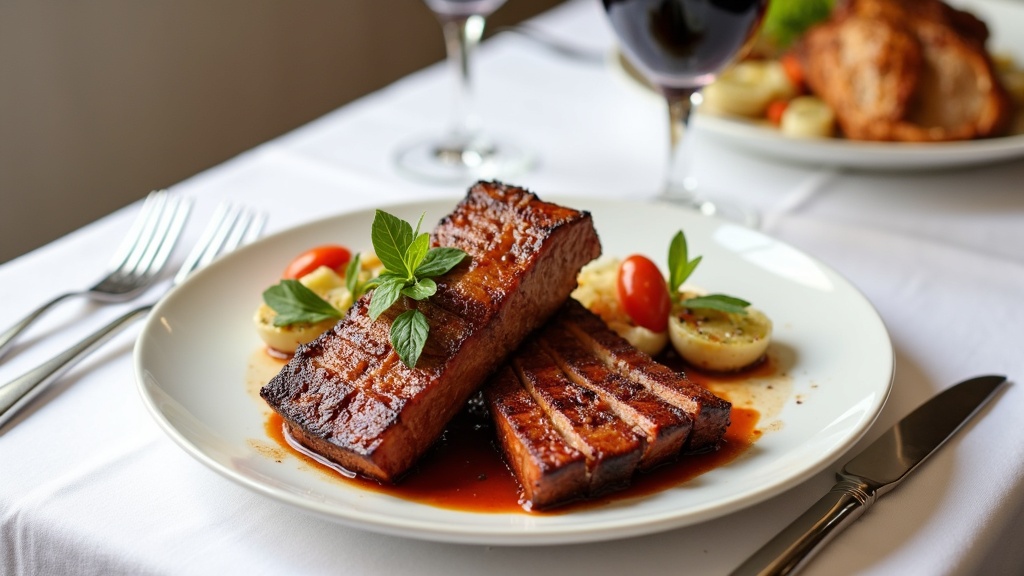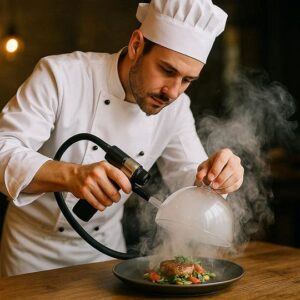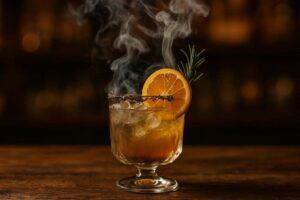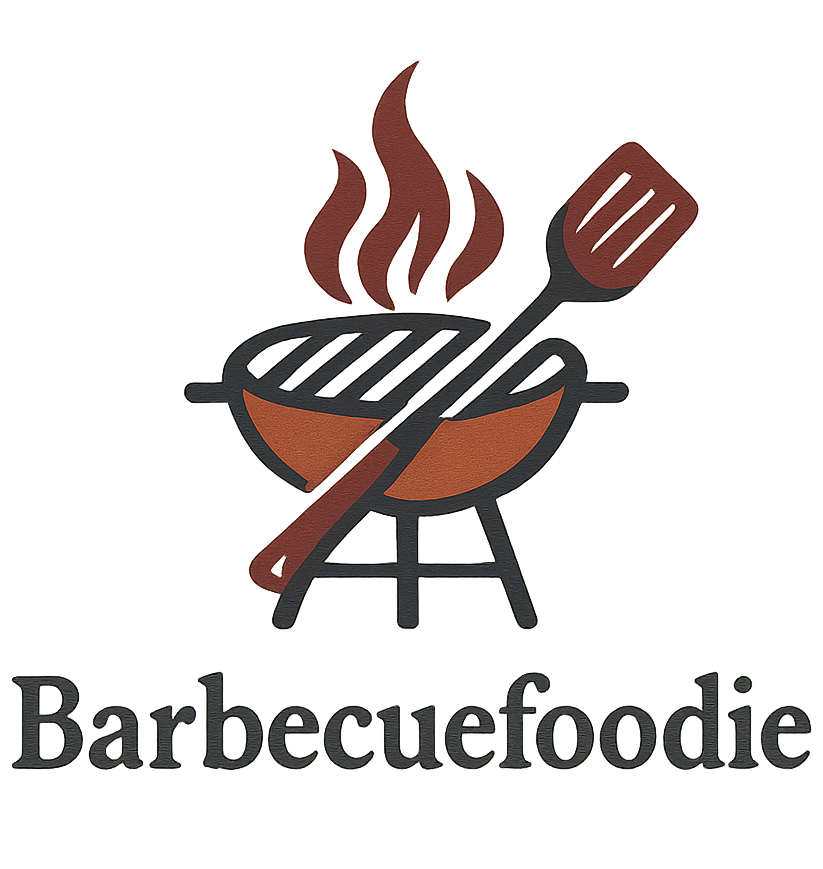Barbecue in fine dining isn’t just about tossing meat on a grill. It has grown into a real art form that mixes smoky flavors with refined technique. More chefs are blending barbecue traditions with upscale touches to wow guests who want something truly memorable. In this article, I’ll walk you through how barbecue gets the fine dining treatment—from sourcing top-notch ingredients and mastering cooking techniques to beautiful plating and pairing with standout drinks. Let’s jump into what makes this dining experience eye-catching and unforgettable.

How Top Quality Ingredients Make All the Difference
Choosing the right ingredients is the backbone of fine dining barbecue. If you start with average cuts, you’ll end up with middling results no matter how talented the chef. In upscale kitchens, there’s a spotlight on premium meats like heritage pork, grass fed beef, or even specialty game. These proteins bring their own natural flavors that really shine through after a gentle kiss of smoke or fire. Gentle is the key here; you wouldn’t smoke a quail alongside a brisket for hours!
Chefs also look for fresh, seasonal produce to balance the plate. Imagine local heirloom tomatoes in a fire roasted salad, or wild mushrooms smoked over hardwood. Even the wood used for smoking goes under the microscope for quality. Some places choose organic or small batch products, locking in a sense of craft and care in every bite. It’s not just about the protein; the sauces, produce, and wood all matter.
There’s also a focus on sourcing locally when possible, which supports local farmers and brings in fresher flavors. This means menus may shift with the seasons. In summer, you might get peach-glazed ribs with fresh greens, while winter menus could offer slow-smoked lamb with root vegetable purees.
The Impact of Refined Cooking Techniques
Fine dining barbecue is about much more than just traditional grilling or smoking. Chefs mix old school methods with new tricks: slow smoking at low temperatures for perfect tenderness, or using sous-vide before a quick char over the fire. Dry aging beef or marinating with flavor packed brines is also common. There’s a deep respect for classic smoking woods like hickory or cherry, but there’s also a lot of testing with new smoke infusions, such as tea-smoked fish or herbs added to the fire.
Temperature control is super important. In many top-tier kitchens, I’ve seen chefs use digital thermometers and high tech ovens to make sure every steak hits the right doneness. The timing and layering of smoke, searing, and rest time all receive attention, so the final plate tastes just right: juicy, tender, and full of flavor.
- Wood Selection: Different woods make unique flavors, and chefs do plenty of testing to see which wood works best for a particular meat.
- Reverse Searing: Cooking low and slow, then finishing with a hot sear to create a perfect, flavorful crust.
- Finesse with Fire: Managing distance from the flame, and rotating meats for even caramelization.
- Modern Touches: Some chefs use smoking guns to finish dishes tableside, or employ custom-made grills for extra precision.
Sophisticated Plating: Turning Smoke and Fire Into Art
Barbecue gets a serious next stage in a fine dining setting. Rather than heaping piles on a tray, everything is plated with real thought. Expect geometric arrangements, delicate garnishes, and perfectly sliced portions. Colors stand out—pickled onions might add a punch of pink to smoky brisket, while grilled peaches brighten up barbecue sauce with orange and sweetness.
Chefs play with size and composition. One approach I loved involved stacking charred vegetables over creamy grits, with slices of smoked duck breast fanned out on the side. Microgreens, edible flowers, and dustings of spice or ash add texture and visual drama. The whole plate is designed to look as incredible as it tastes.
Presentation is so important that kitchen teams often sketch dishes in advance and practice plating for speed and consistency. That way, every guest gets a plate that looks as stunning as the chef intended.
Refined Sides: More Than Standard Slaw
Sides are where fine dining barbecue leaves the old backyard traditions behind. Instead of the usual potato salad or beans, you’ll see things like:
- Charred corn with miso butter and fresh herbs
- Smoked beet tartare with citrus vinaigrette
- Foam topped ramp mashed potatoes
- Handmade pickles from seasonal vegetables
- Wild mushroom farro, slow roasted with beef drippings
- Sweet-sour rhubarb chutney or apple mustard jam
Everything’s balanced to complement the barbecue, not overpower it. Acidity or crunch will balance the smoked richness, while sweet-sour chutneys or relishes can lighten up fatty cuts. There’s a big focus on technique—roasting, pickling, fermenting, or confit sides—so each element receives the fine dining touch.
Even classic sides get a glow-up; coleslaw might come dressed with champagne vinegar and tarragon, or cornbread could get finished with smoked sea salt and cultured butter.
Smart Pairings: Drinks Take Barbecue Higher

Beverage pairings take barbecue further in fine dining, with sommeliers or beverage directors stepping in to find the right match. Instead of just beer (though there are some outstanding craft beers in the mix, too), you’re more likely to see unique wine and cocktail pairings.
- Red Wines: Malbec, Shiraz, or Zinfandel bring out the best in smoky, peppery meat.
- Whites & Rosés: A lightly oaked Chardonnay or a crisp rosé can be fantastic with grilled fish, chicken, or veggie barbecue.
- Creative Cocktails: Barrel-aged cocktails, smoky mezcal drinks, or drinks with grilled citrus give new life to barbecue flavors.
- Local Beer: Some fine dining programs even team up with local breweries to design beers tailored for smoked foods.
Sometimes you’ll spot suggested pairings right on the menu, or servers will recommend sips that pull out the deeper flavors in each dish. Sparkling wine with fatty ribs or a bright Saison with smoked turkey—these little touches make the barbecue experience feel special and thoughtfully curated.
Don’t forget nonalcoholic pairings, either. House made sodas or teas infused with smoke, citrus, or spices can add a surprising twist and please diners who avoid alcohol.
Mastering the Challenges of Fine Dining Barbecue
Blending traditional barbecue with fine dining isn’t always straightforward. Maintaining tenderness while handling a slower, low-temperature cook in a fast-paced kitchen can be tricky. There’s also a challenge in balancing bold smoke flavors without overwhelming the palate. Chefs learn to pace their dishes and pare back sauces and rubs, letting the main ingredients stand tall.
Another issue is consistency. Unlike with regular grilling, even small changes in smoke, wood, temperature, or humidity can impact results. That’s why a lot of chefs constantly taste, smell, and adjust throughout service. It’s a balancing act, but the payoff is worth it.
Managing all this in a restaurant kitchen requires solid training, but also creativity in the face of unpredictable elements—no two days with the smoker are exactly the same. The best kitchen teams keep an eye out for problems and adapt on the fly.
However, what I think is so exciting about backyard and home cooking is that we can experiment to achieve great flavors. We don’t have to be too concerned about consistency or worried about a smudge on a white plate. As long as it tastes great our guests will go for seconds, for sure!
Barbecue in Upscale Restaurants: Real-World Examples
Modern restaurants serve up barbecue that looks nothing like what you might find at a roadside shack, but the flavors still spark nostalgia. Places like The Southern Gentleman in Atlanta build menus around smoked pork, but dress everything up with refined sauces and next-level presentation. In New York, you’ll see smoked octopus with heirloom radish and black garlic aioli, or brisket with foie gras jus.
This creative take keeps things both recognizable and exciting. There’s that memory of barbecue, but it’s lifted in a way that fits a fancy evening out or a special event. Dishes may even jump borders, with chefs adding Korean gochujang to ribs or serving brisket with Japanese Yuzu Kosho for a global flair.
Some pop-up restaurants or chef’s tasting menus offer themed barbecue nights, where each course shows off new methods and unexpected sides. These events highlight just how much this approach can mix comfort food and sophistication.
Frequently Asked Questions
How do chefs keep barbecue elegant without losing the heart of it?
It’s about finding balance. The best fine dining spots don’t hide true barbecue flavors—they highlight them with better ingredients, more controlled cooking, and smart, simple finishing touches.
What kind of equipment do fine dining barbecue chefs use?
Besides classic smokers or woodfired grills, there’s usually a mix of sous-vide machines, precise digital thermometers, and sometimes even wood pellet ovens to keep things super consistent.
Can you do barbecue inspired dishes at home, refined style?
Absolutely. Try using the best quality meat you can find, marinate or slow cook, finish with a char, and focus on sides that are fresh and vibrant. Paying attention to plating and pairings goes a long way, even on a regular weeknight.
Why Fine Dining Barbecue Keeps Growing
Bringing barbecue into fine dining changes the conversation around what smoked and grilled food can be. It’s not stuck in one tradition—instead, you see global influences, inventive pairings, and high-end presentation layered into the experience. Top-quality ingredients, skilled cooking, creative plating, and clever beverage matches all take everything to the next level.
Whether you’re a barbecue fanatic or someone who loves fine dining’s attention to detail, this crossover is worth checking out. Fine dining barbecue has become a spot where comfort and craft meet, and there’s always something new to track down with every bite. If you haven’t tried fine dining barbecue yet, put it on your food adventure map—you might stumble upon your next favorite dish the next time you check out a new restaurant.
